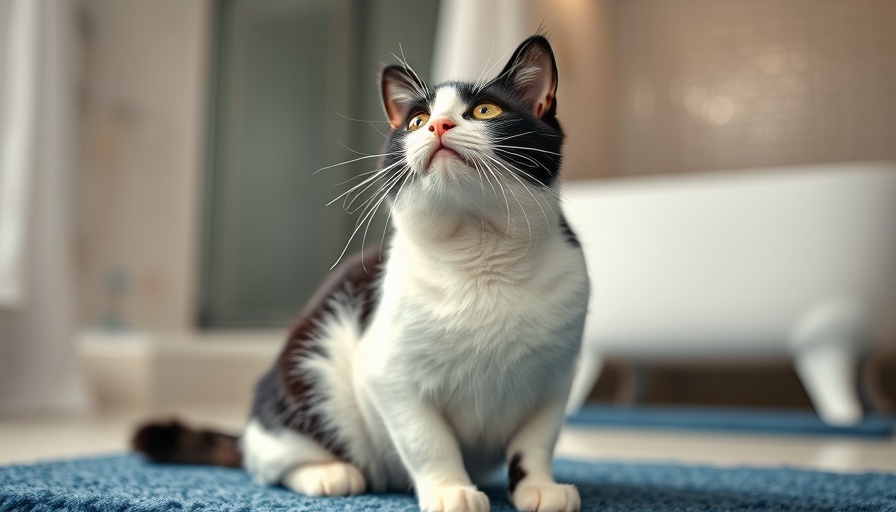
Understanding Why Cats Pee Outside the Litter Box
Many cat owners have experienced the frustration of finding their feline friends using walls as their toilet. You might be asking yourself, “Why might my cat suddenly pee on walls?” It’s pivotal to approach this issue with a variety of lenses, which includes both behavioral and medical considerations.
In 'Why Might Your Cat Suddenly Pee on Walls?', the discussion dives into health and behavioral issues affecting our feline friends, exploring key insights that sparked deeper analysis on our end.
Health Checks: A Priority for Pet Owners
First and foremost, one must ensure that our furry companions are healthy. In the video “Why Might Your Cat Suddenly Pee on Walls?”, it is highlighted that a visit to the vet is crucial if your cat suddenly decides that the litter box isn’t for them. Health complications ranging from urinary tract infections to more severe kidney issues can lead to unusual peeing behavior. As challenging as vet bills may seem, the cost of ignoring potential health issues is generally much higher.
Creating the Ideal Litter Box Environment
Cats can be remarkably particular. If their litter box does not meet their cleanliness standards, they might express their displeasure by targeting your walls. Daily scooping and maintaining a clean environment can go a long way in retaining your cat’s litter box loyalty. In a multi-cat household, the general rule is to have one litter box per cat, plus an additional box. It may seem excessive, but catnip-scented arguments and surprises on the floor are even worse!
Behavioral Triggers: Stress and Environment Changes
Cats are sensitive creatures. Changes in their environment, such as a new couch, a major remodel, or even a new pet, can lead to stress. In response, they may resort to marking their territory with urine. Understanding that these behaviors often stem from fear or anxiety can help cat owners navigate solutions effectively. Consider creating a safe space for your cat, utilizing calming pheromone sprays to reduce stress, and providing them with areas where they can feel secure.
Exploring Alternative Solutions and Options
If standard litter isn’t working, try switching brands. Experiment with different litter types, as some cats can be picky. This experimentation can lead to discovering what makes your cat the most comfortable in their bathroom habits. Additionally, considering alternative locations for the litter box can often alleviate unresolved grievances. You wouldn’t want to avoid using a restroom that’s hidden in a seldom-used basement, and your cat feels the same.
Emotional and Practical Insights
This transition in behavior can initially be disheartening, sparking thoughts of despair and confusion among pet owners. Yet, the human-animal bond is uniquely rewarding. Cats react to change; understanding your cat’s stressors empowers you to create a harmonious home. Monitoring their behavior allows you to be proactive rather than reactive, turning your pet worries into a journey of discovery.
Conclusion: Taking Action for Feline Wellness
Once you understand why a cat pees in unusual places, you can take action to remedy the situation. Establishing a clean, stress-free environment helps restore the intrinsic bond between you and your pet. Next time you find your feline’s bathroom adventures have gone off course, remember these tips to guide you back on the right path. With a little patience and understanding, both you and your cat can thrive together.
 Add Row
Add Row  Add
Add 




 Add Row
Add Row  Add
Add 

Write A Comment